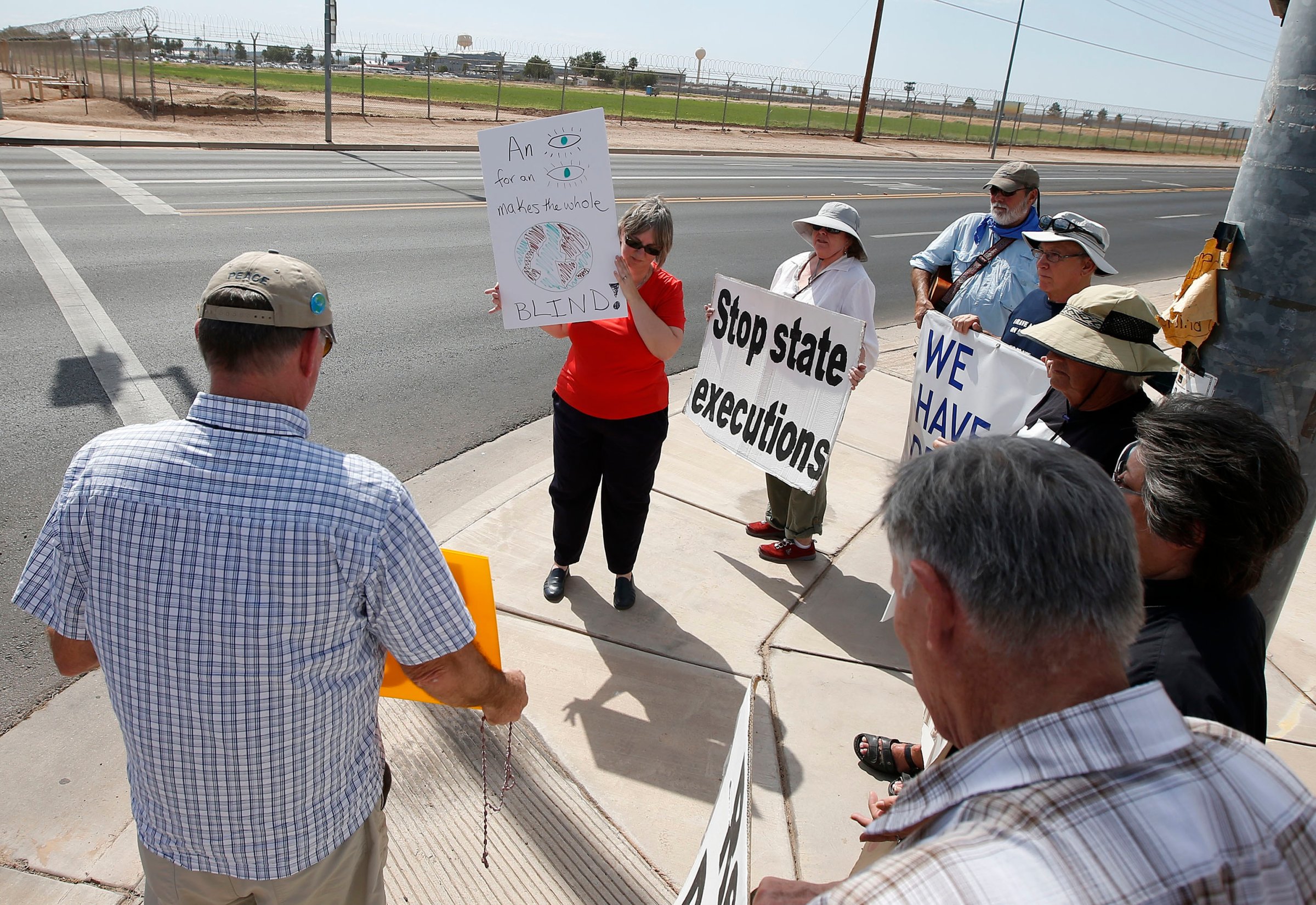
There are just over 3,000 prisoners on death row in the U.S., and 32 states where their execution remains a legal course of action. The decision to implement capital punishment in these states is generally accepted as constitutional, so long as its procedure is in line with the Eighth Amendment’s prohibition of cruel-and-unusual punishment.
The execution of Arizona inmate Joseph R. Wood III on Wednesday took nearly two hours to complete, over much of which Wood “gasped and struggled to breathe,” according to a statement released by his defense team. Of the 26 state-sponsored executions committed in the U.S. so far this year, Wood’s was the third to seemingly go awry due to the use of largely experimental lethal chemicals, prompting outrage from those who cite these incidents as evidence that capital punishment is not constitutionally viable given the apparent suffering of its recipients.
“His two-hour struggle to death goes beyond cruel and unusual. It’s torment. It’s something you’d see in third-world and uncivilized societies,” Arizona state senator Ed Ableser told TIME on Wednesday night. “It’s embarrassing to see that our state once again is in the news for everything that is wrong that happens in our government.”
The execution should have lasted no more than 15 minutes; when it became clear to witnesses that Wood’s death would be prolonged, his attorneys unsuccessfully filed an emergency appeal to end the proceedings, the final of several attempts to save his life. On Tuesday, the U.S. Supreme Court had approved the execution after a lower court ruled that Arizona, in refusing to declare how it had obtained the lethal chemicals to be used in the injection, may have violated Wood’s First Amendment rights.
In Woods’ execution, the state used a combination of the sedative midazolam and the painkiller hydromorphone — the same cocktail used by the state of Ohio in the execution of Dennis McGuire in January, in which the inmate floundered and wheezed on a gurney for nearly half an hour before the state pronounced him dead.
In a statement released after Wood’s death, Arizona Governor Jan Brewer said she was “concerned by the length of time” it took for the injection to kill him, and that she has instructed the state’s Department of Corrections to investigate the matter thoroughly.
It’s still not certain whether Woods indeed suffered pain — state officials have insisted that he was comatose throughout the process — but in any case, his prolonged death draws further attention to the efficacy of the lethal chemicals used for capital punishment in the U.S., one of the world’s last developed nations to still punish its worst criminals with death.
States have been struggling to devise new lethal chemicals to be used in capital punishment since 2011, when U.S. and European pharmaceutical companies ceased to manufacture and sell sodium thiopental, an anesthetic compound that has traditionally been essential to America’s execution cocktails. It has been a process of trial and error, of learning from mistakes. The mistakes are those execution attempts that do not transpire according to plan — typically marked by a death that comes more slowly and viscerally than anticipated.
In recent months, the hesitation of certain states to disclose information about the new chemicals has fueled a public skepticism over the exact physiological effects of these drugs on those to whom they’re administered.
“It’s time for Arizona and the other states still using lethal injection to admit that this experiment with unreliable drugs is a failure,” Cassandra Stubbs, director of the American Civil Liberties Union’s Capital Punishment Project, said in a statement released after Wood’s death. “Instead of hiding lethal injection under layers of foolish secrecy, these states need to show us where the drugs are coming from. Until they can give assurances that the drugs will work as intended, they must stop future executions.”
Nearly a third of all executions involving the sedative used to kill Wood “have had extremely troubling problems,” according to a report released last month by the Death Penalty Information Center.
“Arizona appears to have joined several other states who have been responsible for an entirely preventable horror — a bungled execution,” defense attorney Dale Baich told the press. “The public should hold its officials responsible and demand to make this process more transparent.”
More Must-Reads From TIME
- The 100 Most Influential People of 2024
- How Far Trump Would Go
- Scenes From Pro-Palestinian Encampments Across U.S. Universities
- Saving Seconds Is Better Than Hours
- Why Your Breakfast Should Start with a Vegetable
- 6 Compliments That Land Every Time
- Welcome to the Golden Age of Ryan Gosling
- Want Weekly Recs on What to Watch, Read, and More? Sign Up for Worth Your Time
Contact us at letters@time.com